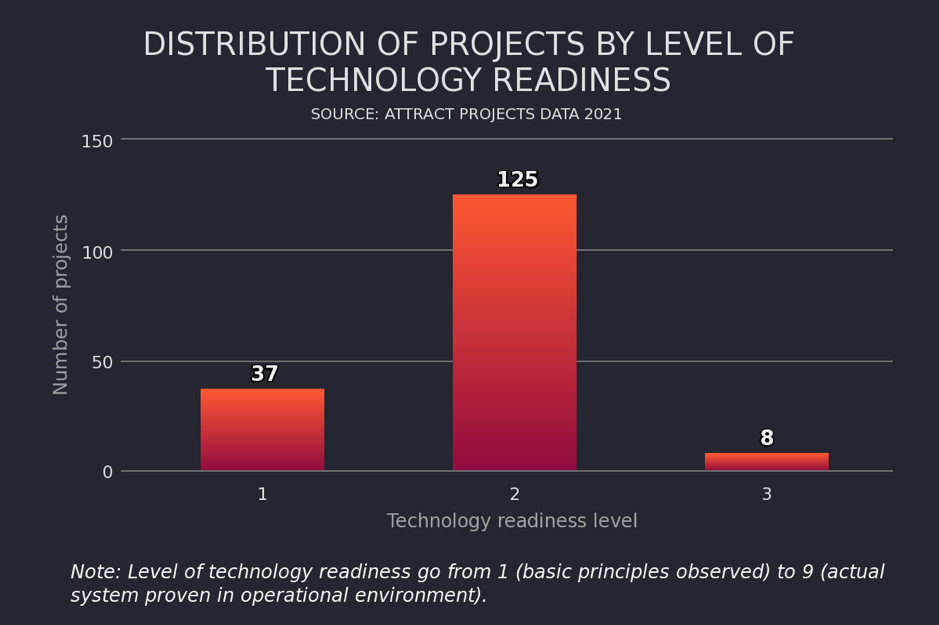Making a Success of ‘Deep Tech:’ What the Data Tells Us
Estimated reading time: 05 minutes -
19 February 2021
In its drive towards digital sovereignty, the European Commission is staking a big bet on so-called “deep tech,” a group of promising European startups that “provide technology solutions based on substantial scientific or engineering challenges,” according to a crowd-sourced definition. These discoveries, in turn, have one crucial thing in common: they are often difficult projects based on complex, still-in-the-laboratory science, and they often require lengthy research and development incubation periods and large capital investment before commercialisation.
The good news is Europe has excellent deep tech; lots of it, in fact. European Commission President Ursula von der Leyen recently boasted to DigitalEurope, an industry association, that “Europe’s ‘deep tech’ companies are worth a combined €700 billion today, and they are growing at incredible speed. Europe is a rising digital power.” In January 2021, for the first time, the European Innovation Council Fund began investing directly in deep-tech startup equity, and complementing this direct ownership with mentoring and support through the European Innovation Council Accelerator, previously known as the “SME Instrument,” a programme that seeks to identify promising European startups and help them grow to scale and conquer global markets.
So the challenge is no longer one of getting deep tech on the agenda. The challenge today is using our knowledge to make sure the things we want to happen do happen. Put another way, having chosen to prioritise and fund deep tech, policymakers now need to nurture and build an effective ecosystem for deep-tech development – one that includes ready access to venture capital, good advice and ultimately smart consumers who will want to reach for the dramatically new goods and services brought to life by deep tech. Along the way, we must also make sure that the public money invested delivers substantial dividends in the form of 1) successful companies, 2) sound advances for society, 3) attractive products for consumers, and 4) good value for taxpayers and governments alike.
So far, so good. According to The European Strategy Forum on Research Infrastructures (ESFRI), the 50 largest “scientific-research infrastructures” – the facilities, resources and related services used by the scientific community to conduct top-level research – have mobilised nearly €20 billion of investment in Europe for highly sophisticated technologies. The challenge, then, is how to commercialise and develop this advanced technology in products and services to benefit European Union economies and society at large.
The term “deep tech” itself speaks volumes about the challenge. “Deep” can refer to the fact that these technologies are sophisticated and full of potential. But it can also imply that the technology is further back in the development and marketing cycles with greater distance to immediate market applications. These unique characteristics have implications for how both startups and large-scale enterprises should invest in, cultivate and develop upstream technologies that have potentially far-reaching downstream applications. Deep tech is not new; we have a great deal of experience with deep tech emanating from military and scientific institutions that gained momentum during World War II and continuing through the Cold War. Today, recent developments in COVID-19 research and automated vehicles have been celebrated as hallmarks of deep technologies in action. What perhaps is new is our recognition of deep tech’s special characteristics and our appreciation of its enormous potential.
Indeed, for those of us who work in education or policy, there are many aspects involved in proactively managing deep tech where we still lack insight. The high risk, large uncertainty and limited funding opportunities suggest that we may need new methods for training managers and entrepreneurs, new models of attracting risk-tolerant venture capital and funding instruments and new policy levers to de-risk investment and stimulate ventures.
Some potentially useful evidence is emerging from the early results of ATTRACT, a Horizon 2020-funded programme which provides seed funding and support to 170 projects led by Europe’s largest scientific research infrastructures and the industrial communities alongside of them. The programme’s goal is to commercialise breakthroughs in imaging, detection and computational technologies. The main idea is that scientific research infrastructures should focus on and develop technologies that don’t exist in industrial markets – using their fundamental scientific research to deliver advanced solutions with higher levels of resolution, precision and energy-efficiency. The results should be world-class technologies developed by world-renowned scientific research groups and funded with taxpayer money. These discoveries could then be commercialised into products and services by European venture capitalists and entrepreneurs with the vision and resources to grow deep tech ventures.
We recently surveyed the 170 ATTRACT project owners to obtain greater insight into the programme’s progress and to gauge the motivations and experiences of the people taking part in it. We found that 88% of respondents said they had their business ideas before ATTRACT and 77% were actively looking for funding before they joined the programme. But 72% of respondents stated that the ATTRACT project had made possible a direct extension of their ongoing research.
What’s more, the project was bringing greater focus to potential breakthroughs. Approximately 70% of the projects were targeted toward “specific” or “specific-yet-expandable” market applications; only 30% were aimed more broadly at “general technologies.”

When considering the immediate market application, 55% of the projects were focused on developing “upstream” foundational technologies, i.e., technologies still distant from any potentially commercial product, while 45% were aimed at “downstream” innovation with concrete product-based applications as the most likely outcome.

The data re-enforces our model of deep tech as a phenomenon built primarily around foundational technologies that typically can be combined later with other technologies to reach downstream applications. It is not surprising that 66% of respondents said that one of the main benefits of ATTRACT project participation was the contacts they gained in industry, including partners with established sales, marketing and commercialisation capabilities.

Our interpretation of this data is that many new technologies and techniques are being developed to solve unprecedented, domain-specific problems in the daily work of the scientists and engineers who design, build and operate leading science research infrastructures. Moreover, many scientists and engineers working in these infrastructures have the foresight and creativity to envision alternative uses for their technologies. However, given the focus and sophisticated nature of the technologies, the distance to market can be longer than what most venture-capital funds are comfortable with.
Through analysis of the project proposals and participant surveys of ATTRACT, we make the following recommendations to help cultivate deep tech.
Invest in market readiness and demand-side dynamics. Novel, cross-disciplinary ideas naturally emerge at science research infrastructures. Resources should be invested in the technological maturity of these organisations. But equally importantly, we should seek to gain insight into the problems consumers and industry face so we can also develop products and services that will truly be demanded.
Build complementary teams. Technology transfer and innovation policy should not only broker ideas but also combine scientists and engineers in teams with experienced businesspeople. Very often, the professional values and cultures of science research infrastructures are different from faster-paced, pragmatic entrepreneurial mind-sets. Getting the right balance is critical.
Team with commercial partners. Science research infrastructure managers should engage commercial partners close to downstream applications with experience in selling to real, paying customers. Commercial partners need to understand the messy world of logistics and scalable delivery systems in which deep tech must operate. These insights are understandably uncommon in the halls of basic science.
Use public funds to “de-risk” unproven projects. European entrepreneurs often bemoan the lack of risk-tolerant venture capital funding. Yet, the differences between deep tech and the normal technology with which venture capital funds work are real. As a foundational technology, deep tech is often highly dependent on complementary components and systems, which makes validation and testing difficult. The role of public funding to absorb risks early in development cycles that span five or more years is important to enticing private investment.
Europe has some of the world’s most accomplished and prestigious scientific institutions. We have seen that these research infrastructures are also hotbeds of sophisticated deep technology waiting to be harvested. The challenges of deep tech entrepreneurship can be substantial. And the nature of the work, technologies and cultures spanning the scientific and business worlds are very divergent. With continued policy experimentation and ongoing research, our knowledge of how to actively cultivate deep tech can help us leverage these unique European resources.
Jonathan Wareham is professor of information systems and former dean of faculty at ESADE Business School.
Download in PDF







